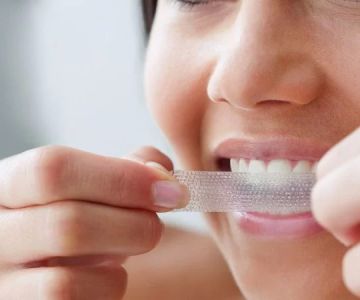- Causes of Jaw Pain and Swelling After Tooth Extraction
- Normal vs Abnormal Pain and Swelling
- How to Manage Jaw Pain After Tooth Extraction
- When to See a Dentist for Jaw Pain
- Preventing Jaw Pain and Swelling After Tooth Extraction
Causes of Jaw Pain and Swelling After Tooth Extraction
Tooth extraction is a common dental procedure performed for various reasons, such as removing decayed teeth, impacted wisdom teeth, or preparing for orthodontic treatment. While it is generally a routine procedure, it is normal to experience some level of jaw pain and swelling in the days following the extraction. However, the intensity and duration of these symptoms can vary, depending on several factors.
Jaw pain and swelling are typical responses to any surgical procedure involving the removal of a tooth, as the body works to heal the affected area. The causes of pain and swelling after tooth extraction can range from inflammation of the tissues to more severe complications. Let’s explore the most common reasons for these symptoms and what you can expect during your recovery.
Normal vs Abnormal Pain and Swelling
Understanding the difference between normal and abnormal pain and swelling after tooth extraction is crucial for managing your recovery. While some discomfort is expected, there are signs to look for that may indicate a problem.
Normal Pain and Swelling
After a tooth extraction, it’s typical to experience moderate pain and swelling in the jaw, especially during the first 24 to 48 hours. This is part of the body’s natural healing process. Some swelling around the extraction site is normal and should begin to subside after a few days. Pain may also be present but is usually manageable with over-the-counter pain relievers.
Abnormal Pain and Swelling
If the pain and swelling become significantly worse after the initial few days, it could indicate a complication. Severe or increasing pain could be a sign of an infection or dry socket. Dry socket occurs when the blood clot at the extraction site is dislodged or dissolves prematurely, exposing the underlying bone and nerves. This can cause intense pain and is considered an abnormal response to the procedure.
How to Manage Jaw Pain After Tooth Extraction
Managing jaw pain after tooth extraction is an important part of your recovery process. Proper care can help reduce the pain and prevent complications. Here are some tips to manage pain effectively:
1. Follow Post-Operative Care Instructions
Your dentist or oral surgeon will provide specific instructions after your extraction. This may include advice on pain management, how to care for the extraction site, and when to return for a follow-up visit. Be sure to follow these instructions closely to avoid complications such as infection or dry socket.
2. Use Cold Compresses
Applying a cold compress to the affected side of your face during the first 24 hours after the extraction can help reduce swelling and numb the area, providing pain relief. Wrap ice or a cold pack in a towel and apply it to your jaw for 15-20 minutes at a time, taking breaks between applications.
3. Take Pain Relievers as Recommended
Over-the-counter pain relievers like ibuprofen or acetaminophen are typically recommended to manage mild to moderate pain after a tooth extraction. Be sure to follow the recommended dosage and never exceed the advised amount. If the pain is severe, your dentist may prescribe a stronger pain medication.
4. Avoid Strenuous Activities
Resting is essential for recovery. Avoid vigorous physical activities for at least the first 48 hours after your extraction. Strenuous activities can increase blood flow to the affected area, potentially worsening swelling and prolonging the healing process.
5. Eat Soft Foods
After your tooth extraction, stick to soft foods such as mashed potatoes, yogurt, soups, and smoothies. Avoid chewing on the side of the extraction and steer clear of hard, crunchy, or spicy foods that could irritate the area or get stuck in the wound.
When to See a Dentist for Jaw Pain
While some pain and swelling are normal after a tooth extraction, certain symptoms indicate the need for professional attention. If you experience any of the following, it’s important to contact your dentist immediately:
1. Severe or Increasing Pain
If your pain becomes severe or worsens after the first few days, this could be a sign of an infection or dry socket. In such cases, it’s essential to seek immediate treatment to avoid further complications.
2. Prolonged Swelling or Redness
Swelling should gradually subside over the course of a few days. If the swelling worsens or is accompanied by redness or warmth around the extraction site, this could be a sign of infection. Early treatment can prevent the infection from spreading.
3. Excessive Bleeding
While some minor bleeding is normal after an extraction, it should stop within a few hours. If you experience heavy bleeding that doesn’t stop after applying gauze or biting down gently, contact your dentist immediately. This could be an indication of a blood clot issue or other complications.
Preventing Jaw Pain and Swelling After Tooth Extraction
While it’s impossible to completely eliminate the risk of pain and swelling after a tooth extraction, there are several steps you can take to reduce the likelihood of complications:
1. Follow Pre-Operative Instructions
Your dentist will likely provide guidelines to follow before your extraction. This may include instructions on eating, drinking, or taking certain medications before the procedure. Following these instructions helps ensure that the procedure goes smoothly and reduces the risk of complications.
2. Avoid Smoking and Alcohol
Smoking and drinking alcohol can interfere with the healing process and increase the risk of infection or dry socket. Avoid these habits for at least 48 hours after your extraction to support optimal healing.
3. Stay Hydrated and Rest
Drinking plenty of water and getting enough rest are crucial for your body’s ability to heal properly. Proper hydration helps promote healing and minimizes swelling, while rest allows your body to focus its energy on recovery.
In conclusion, jaw pain and swelling after tooth extraction are common side effects that are usually temporary. However, it is important to be aware of the potential causes and know how to manage them to ensure a smooth recovery. If the symptoms persist or worsen, don’t hesitate to reach out to your dentist for advice or treatment. By following proper care instructions and taking proactive measures, you can minimize discomfort and speed up your recovery process.
If you're looking for more advice or information on post-extraction care, visit our website at Dentistry Toothtruth for helpful resources and tips!







 Dr. Alison Seliger-Schamberg, DMD0.0 (0 review)
Dr. Alison Seliger-Schamberg, DMD0.0 (0 review) Town Line Dental Care4.0 (146 review)
Town Line Dental Care4.0 (146 review) Casey A. Rutkowski DMD, PA5.0 (205 review)
Casey A. Rutkowski DMD, PA5.0 (205 review) Downey Family Cosmetic Dentistry4.0 (120 review)
Downey Family Cosmetic Dentistry4.0 (120 review) Brian M. Weinberg, D.M.D., Ltd.5.0 (6 review)
Brian M. Weinberg, D.M.D., Ltd.5.0 (6 review) Piedmont Periodontics4.0 (34 review)
Piedmont Periodontics4.0 (34 review) The Importance of Oral Health Education During Pregnancy for a Healthy Pregnancy
The Importance of Oral Health Education During Pregnancy for a Healthy Pregnancy Best Tips for Brushing Your Teeth Properly for Healthy Gums: Essential Techniques for Oral Health
Best Tips for Brushing Your Teeth Properly for Healthy Gums: Essential Techniques for Oral Health Why Skipping Dental Checkups Can Lead to Bigger Oral Health Problems
Why Skipping Dental Checkups Can Lead to Bigger Oral Health Problems Advantages of Porcelain Dental Restorations
Advantages of Porcelain Dental Restorations How Can Diabetes Cause Tooth and Gum Problems? Preventing and Managing Oral Health Issues
How Can Diabetes Cause Tooth and Gum Problems? Preventing and Managing Oral Health Issues Healthy Habits for Promoting Good Oral Health and Hygiene: Tips for a Healthy Smile
Healthy Habits for Promoting Good Oral Health and Hygiene: Tips for a Healthy Smile